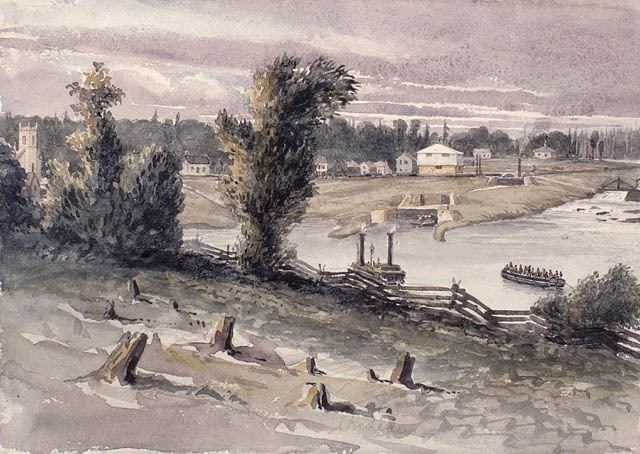 | ||
Grenville County is a historic county in the Canadian province of Ontario. The county was created in 1792, and named in honour of William Wyndham Grenville, 1st Baron Grenville, who was Secretary of State in 1790. It consisted of five townships, which were settled primarily by United Empire Loyalists in the late 1700s after the Revolutionary War. Prior to being settled by Europeans, the area was home to many generations of native cultures. Grenville County merged with Leeds County in 1850 to create Leeds and Grenville County. The county covered an area of 272,261 acres (110,180 ha).
Contents
History
Prior to European settlement, numerous Native American villages were present in Grenville County; when the settlers first arrived, these natives still occupied the area and were essentially forced out by the settlements. The French briefly occupied this area at present-day Johnstown, in what was to become Edwardsburgh township, and at Pointe au Baril (present day Maitland) in what would be Augusta township. These French settlements date back to 1670 and 1759 respectively.
In the late 1700s, land was surveyed in and around what would later become Grenville County to be distributed as land grants to the United Empire Loyalists and their families for their loyalty to the Crown. The first townships laid out were called the Royal Townships, and were situated along the St. Lawrence River where land was most productive and travel was convenient; two of these townships were to become part of Grenville County – Edwardsburgh, Royal Township Six, and Augusta, Royal Township Seven. Later, in the 1790s, three more townships were created further north of the existing townships which became part of Grenville County: Oxford-on-Rideau, South Gower, and Wolford townships. Shortly after the Loyalists arrival, Irish and Scottish immigrants began to settle in the area as well.
The European settlers dotted the new townships with small agricultural communities which were mostly self-sustaining. These communities were established out of necessity, as roads in the area were not well-established during nineteenth century and people were travelling via horse and buggy, or on foot. Every few kilometres, a village or hamlet was usually present; these villages usually each had their own churches, schools, cemeteries and temperance halls, as well as pioneer businesses such as cheese factories, saw and grist mills, blacksmiths, limekilns, post offices, general stores or asheries. Most residents made their living through small-scale mixed farming operations.
In 1850, Grenville county was amalgamated with the neighbouring county of Leeds, to become the United Counties of Leeds and Grenville. This occurred when the area ceased to be divided by districts, and Canada began to be divided instead by province. Prior to confederation, the area of Upper Canada was divided by districts, which held the counties, which held the townships; districts changed often in name and in area making records from this era highly confusing. During the mid-1800s, counties began amalgamating and the districts were dropped; in 1867, the country was divided into four provinces with Grenville County, now amalgamated with Leeds, becoming part of Ontario and Ontario now being divided neatly by counties.
Original townships
Grenville County originally consisted of five separate townships, two of which still exist, one under a different name; additionally, it included the town of Prescott. The five townships were Augusta, Edwardsburgh, Oxford-on-Rideau, South Gower, and Wolford.
